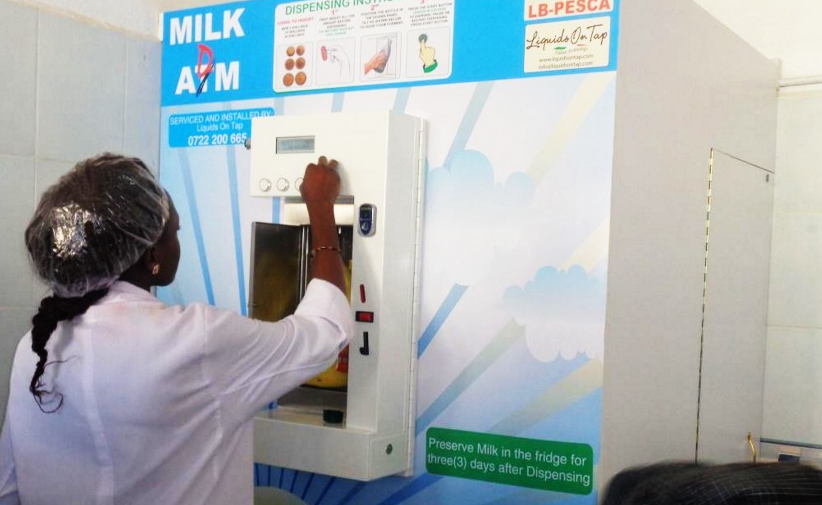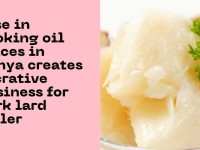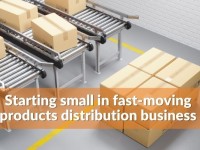Hello folks, there is a new cash-cow in town and it is known as the milk dispenser or milk ATM. It works like a traditional bank ATM with the only difference being that it swallows coins and gives out milk (simply put). Well this is not exactly a new idea here in Kenya because several supermarkets are already offering it but according to our research there is still a lot of potential in this emerging opportunity waiting to be fully realized.
With so many upcoming estates in our urban centres and with abundance of raw milk from our hardworking farmers, there is absolutely no reason why you should not be milking some profits from this opportunity. Here’s how you can get started.
Step One: Find A Good Location
The secret to success in this business lies in achieving a large volume of sales per day. You therefore should locate your business in an area that is adequately populated. The more walk-in customers your ATM can attract, the better. But what if finding such a location proves difficult? Well, worry not.
You can approach your nearest supermarket or mini-market and negotiate a revenue sharing agreement. Like there is one guy from Rongai who has partnered with Tuskys. They will give you the space and you will give them the machine and milk to dispense. Smart…isn’t it?
Step Two: Choose A Good ATM Machine
Choose a machine that does not strain your budget and one that has enough capacity to sustain your customers’ demand. You can start small with a 200 litre machine and then graduate to a bigger 1000 litre machine as demand rises.
As for purchasing the machine you can either buy one locally from local manufacturers like DASE or import directly from Italy. Locally manufactured machines are cheaper…and as you know, it’s a good idea to BUY KENYA, BUILD KENYA. Here are some tip that will come in handy in your search for a good milk ATM machine.
*Buy one with an in-built cooler. Milk is a perishable product and you need to keep it cool.
*If importing, consider buying the machine in separate parts to be assembled locally. That will help you save on tax.
*Generally, look for a machine that is easy to use. Preferably one whose technology can be understood even by kids.
*Look for a machine whose spare parts are readily available locally and insist on warranty cover on all your purchases.
Step Three: Arrange With Farmers and Suppliers For Milk
Yes your business will be located in the urban centres but in order to get quality and consistent milk supplies you will need to link up with farmers or suppliers. As part of your planning, take time to visit the surrounding rural areas and compare cost before settling on the most feasible source.
Don’t take chances. Have your suppliers sign a contract with you…that way you will be sure they’ll not sell your milk to anyone else and leave your supplies hanging.
*Look for high quality milk that is not adulterated with water
*The Kenya Dairy Board requires only pasteurised milk to be sold. Try to find farmers who can supply pasteurised milk…not raw milk.
*If you can’t find pasteurized milk, don’t worry. You can invest in a pasteurizer and be purchasing cheap raw milk. Smart idea!
A litre of raw milk will cost you 35/- at the farms while a litre of pasteurized milk will cost you 50/-.
Step Four: Get Licensed
You will need a license from the Kenya Daily Board which will cost you Ksh2,500 with a one-time application fee of Ksh600. This is of course in addition to the county single business permit which may vary from Ksh5,000 in remote counties to as high as Ksh20,000 in urban counties like Nairobi and Mombasa.
HINT: Areas that fall in Machakos, Kiambu or Kajiado counties tend to have cheaper single-business permit charges than ones in the core Nairobi despite their proximity to the city (Examples: Ongata Rongai (Kajiado), Syokimau (Machakos), Githurai 45 (Kiambu), Kahawa Sukari(Kiambu), Kahawa Wendani (Kiambu), Ruaka (Kiambu), Mlolongo (Machakos), Kitengela (Kajiado)).
How Much To Spend As You Start (Estimates)
Buying Milk ATM (200 Litres) – Ksh275,000
Rent & Deposit – Ksh20,000
Pasteurised Milk – Ksh55 per litre
Transport – Ksh1,000
Relevant Licenses – Ksh20,000
MINIMUM STARTING BUDGET = Ksh330,000
As your business grows, you can invest in a pasteuriser so that you can be buying raw milk and pasteurizing it yourself which is cheaper by 20/-…that way you will be able to get bigger profit margins and remain competitive. A good pasteurizer will cost you about Ksh200,000.
You can also buy a motor-cycle which you will be using to collect milk from the rural areas and transport to your shop in the city.
Profit Potential (Estimates)
A well established milk ATM can sell over 200 litres of milk per day. This is because ATM milk is of the same quality as packaged milk yet 30% cheaper. So provided your shop is clean and your customer service is on point, there is no reason as to why you should not sell more than 200 litres a day.
There is even more potential if you partner with a renowned supermarket on a revenue sharing agreement. That way you can sell more than 2,000 litres of milk per day.
Okey…let’s stop day dreaming and stick to the 200 litres for purposes of calculations.
*Sales per Month = Ksh420,000
*Monthly Expenses = Ksh255,000
*MINIMUM PROFIT Per Month = Ksh165,000 (Per ATM)
Going by this rule, you will need just 4 months to recoup your initial investment.
Final Word
In supermarkets, a litre of pasteurized and packaged milk goes for Ksh100/- and therefore by offering cheaper prices you will definitely have a clear competitive advantage. Remember, you can start small even without a pasteurizer and still make a decent profit.
Alternatively, you can choose to invest a little more and buy a pasteuriser so you can be adding value to your milk and selling it at double profit. And milk, being such a basic product, you don’t have to struggle to get customers. Isn’t that something worth pondering upon?



















